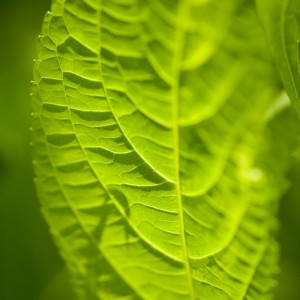Welcoming Summer Greens
Posted in Around the Garden on May 28 2012, by Matt Newman
 I’ll admit I have a softness for roses, a fondness for orchids, and a weakness for flame-orange poppies. Still, it’s seldom I find an eyeful of flowers so inspirational as an hour spent under the leaves of the trees.
I’ll admit I have a softness for roses, a fondness for orchids, and a weakness for flame-orange poppies. Still, it’s seldom I find an eyeful of flowers so inspirational as an hour spent under the leaves of the trees.
You’ll best understand what I mean while walking the trails of the NYBG‘s Forest around this time of year, arched over in each direction with lacing branches of every shape and angle. The effect is something like slipping a green gel over a stage light. Sun filters down through the canopy and dapples the forest floor with piebald images both cloudy and sharp. It cools you, or seems to, on the most scorching afternoons. And there’s a freshness to the scene that chimes in to remind you–with something resembling pride–of winter’s distance.
I feel like it’s more about quantity than quality, in this case. Not that we’re lacking in either department. But with a vibrant spring green, moving toward summer, the effect is never so great as when it’s flooding your field of vision–overhead as it is the forest, or underfoot as in a field of grasses. Catching the greens of the verdant seasons in the motifs of daylight makes for a scene even Claude Monet would have taken to heart.
In fact, Monet did take the color to heart. The artist employed a grounding theme throughout Giverny, in and around the thousands of flowers that dominated the landscape of his garden. It is known as “Vert Monet,” or Monet green. This homemade hue was used to paint much of the structure of Giverny, including the accents on Monet’s house, the railings of the iconic Japanese bridge, and the arches passing over the Grand Allée. Our homage in the Enid A. Haupt Conservatory likewise captures that memorable color.
[Not a valid template]With 250 acres making up Nature’s Showplace, there’s more to see beyond the glasshouses and galleries. After Monet’s Garden, make a point of walking just a little further; you might appreciate nature’s inspiration even beyond the faces of the flowers.

